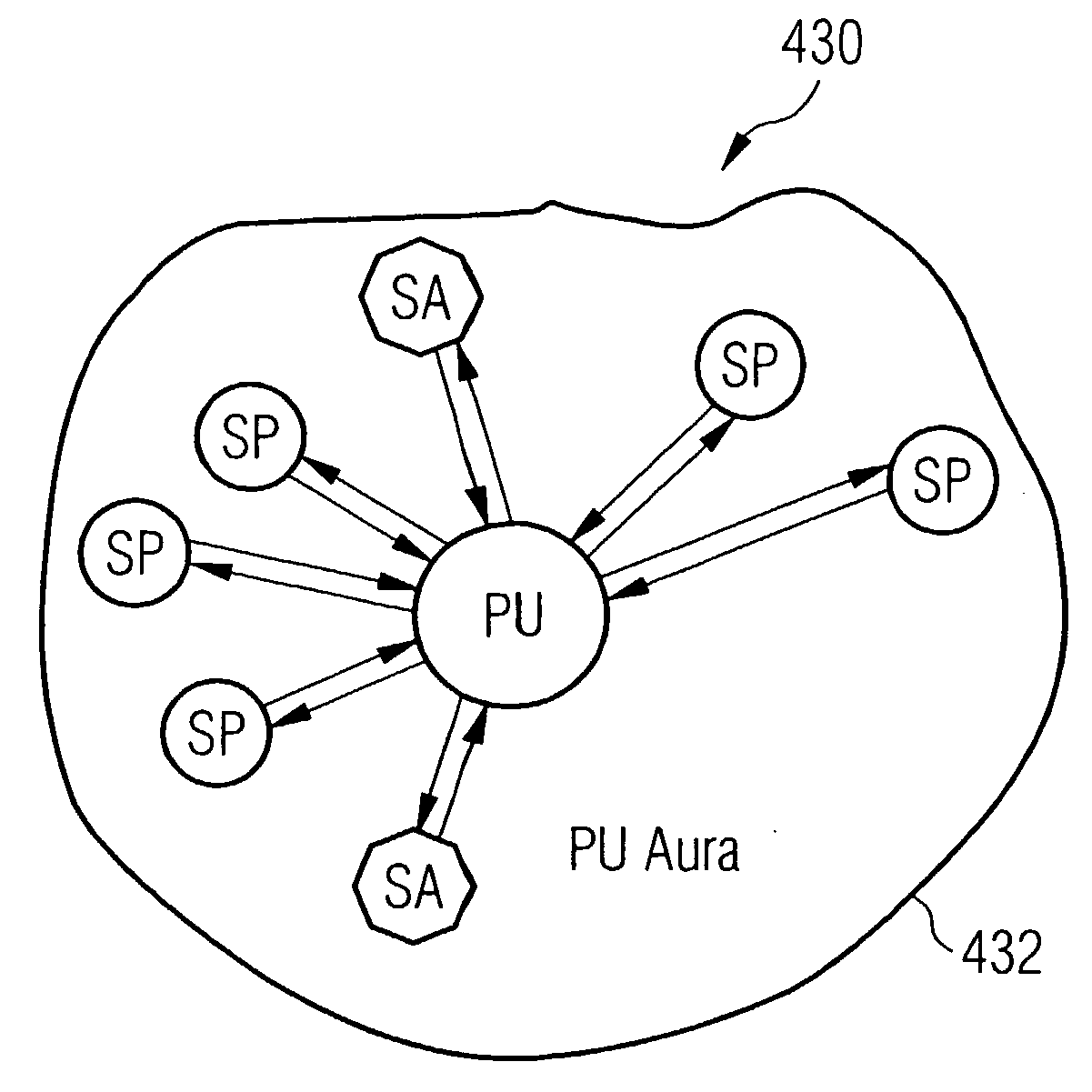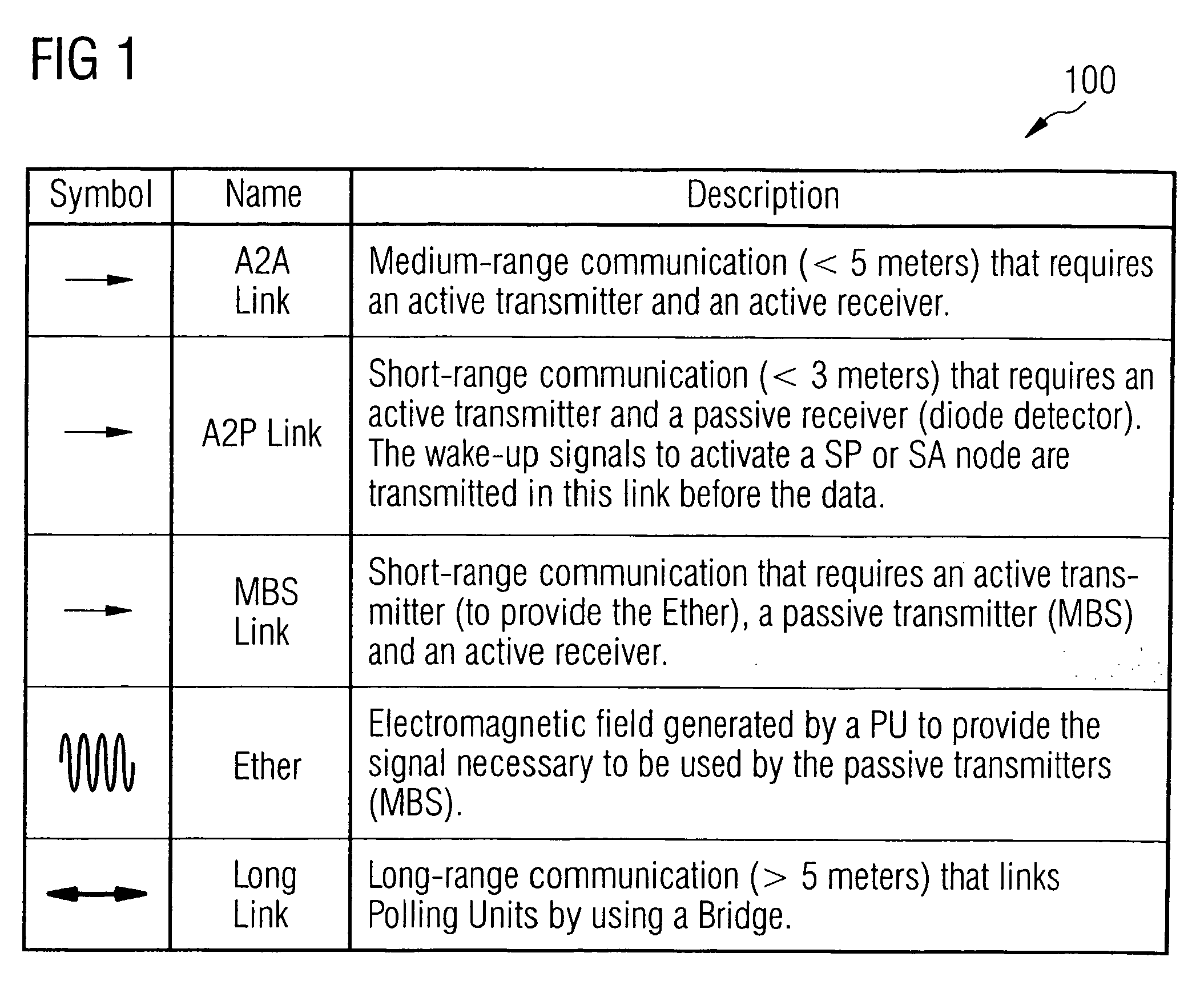Wireless communication network architecture
a wireless communication and network architecture technology, applied in data switching networks, instruments, high-level techniques, etc., can solve the problems of limiting the range and the complexity of the reader uni
- Summary
- Abstract
- Description
- Claims
- Application Information
AI Technical Summary
Benefits of technology
Problems solved by technology
Method used
Image
Examples
Embodiment Construction
[0049] In the following, the preferred embodiment of the underlying invention as depicted in FIGS. 1 to 6-4b shall be explained in detail.
[0050] The proposed network can be e.g. a wireless network described by different node types (classes), node communication possibilities, communication technologies employed (in different scenarios and configurations), radio features and Media-Access-Control Layer (MAC-layer) technologies.
[0051] In the proposed network nodes are characterized by their role within the network, their communication capabilities, and their supported wireless (radio) technology (which comprises e.g. the applied modulation scheme) or utilized wireless communication units.
[0052] According to the invention, e.g. four different node classes (defined by their radio communication unit configuration) can be used, which are not mutually exclusive: active transmitters (aTx), active receivers (aRx), passive transmitters (pTx) and passive receivers (pRx).
[0053] An active tran...
PUM
 Login to View More
Login to View More Abstract
Description
Claims
Application Information
 Login to View More
Login to View More - R&D
- Intellectual Property
- Life Sciences
- Materials
- Tech Scout
- Unparalleled Data Quality
- Higher Quality Content
- 60% Fewer Hallucinations
Browse by: Latest US Patents, China's latest patents, Technical Efficacy Thesaurus, Application Domain, Technology Topic, Popular Technical Reports.
© 2025 PatSnap. All rights reserved.Legal|Privacy policy|Modern Slavery Act Transparency Statement|Sitemap|About US| Contact US: help@patsnap.com



